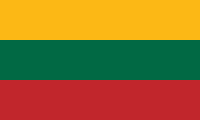
Photo from wikipedia
The investigations of genetic resources in Lithuania started in 1924. Collections including more than 110 samples of different vegetable species have been accumulated and continue to expand. The breeding program… Click to show full abstract
The investigations of genetic resources in Lithuania started in 1924. Collections including more than 110 samples of different vegetable species have been accumulated and continue to expand. The breeding program is focused on productivity, quality traits and biochemical composition, and tolerance of unfavorable environmental factors in changing climates. Currently, over 95 cultivars and hybrids of vegetables have been released, about 40 of which are included in the EU Common catalogue of varieties of vegetable species. From 2012 to 2021, twelve cultivars were developed at the Lithuanian Research Centre for Agriculture and Forestry, seven of which are fruit vegetables, four are root crops, and two are in the onion group. The breeding direction was to increase the sustainable production of vegetables and improve the quality of the products by using national and adapted genetic resources as valuable parental forms. For 10 years, vegetable plant hybrids and cultivars were developed to meet commercial cultivars’ market requirements. The tomato cultivars ‘Ainiai’ H, ‘Adas’ H, ‘Auksiai’ H, ‘Alvita’ and cucumber cultivar ‘Roliai’ are distinguished by a good biochemical composition and taste, while the sweet pepper cultivar ‘Gabija’ has high productivity and fruit quality. The carrot hybrids ‘Ieva’, ‘Rokita’, ‘Jola’, garlic cultivar ‘Dangiai’, and onion cultivar ‘Joriai’ are distinguished by their productivity and good storage ability. The Jerusalem artichoke cultivar ‘Sauliai’ has tubers with white skin and the colour of the flowers is yellow.
Journal Title: Plants
Year Published: 2023
Link to full text (if available)
Share on Social Media: Sign Up to like & get
recommendations!